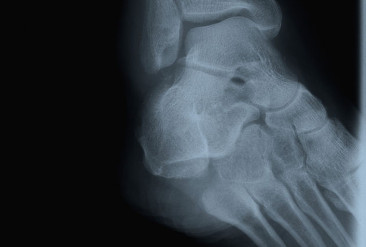|
|
| The Ankle Rules–You Don’t Always Have to Get an X-ray! |
| By Jeffrey E. Keller MD |
| Published: 11/21/2016 |
 Back in the days when I worked in the ER, I ordered a lot of unnecessary x-rays. Ankle x-rays were a particular problem. Often I was sure that there was no fracture, but I ordered the x-ray anyway because of habit–patients with injured ankles got an x-ray. That’s just the way it was.
Back in the days when I worked in the ER, I ordered a lot of unnecessary x-rays. Ankle x-rays were a particular problem. Often I was sure that there was no fracture, but I ordered the x-ray anyway because of habit–patients with injured ankles got an x-ray. That’s just the way it was.
So I loved the Ottawa Ankle Rules when they came out. The Ottawa Ankle Rules were developed by a group of doctors in (where else?) Ottawa to determine which ankle injuries did NOT need to be x-rayed. They have been studied many times and have been found to be accurate. When used, Ankle Rules can cut the number of ankle x-rays by a third, easy. The Ottawa Ankle Rules can be even more important in corrections than in the ER. There, the only downsides to an unnecessary x-ray were expense and time. But in corrections, x-rays can be a logistical and security nightmare. So it is good to know when you don’t have to order an x-ray for the inmate who twisted his ankle attempting to dunk the basketball at rec. Before I review the Rules, I want to go over the ankle terminology. You don’t sound professional if you can’t speak the professional language. How confident would you be in a mechanic who said “that thingie there” needs fixed? Fortunately, there is not too much to remember when it comes to ankles. If you already know this stuff–skip ahead to the next section! Ankle Terminology The ankle joint is formed by just three bones, the talus in the middle and the tibia and fibula on the outside. The “bumps” on the outside of the ankle are the ends of the tibia and fibula and are called malleoli–the lateral malleolus on the outside and the medial malleolus on the inside. The medial malleolus is easy because it only has one ligament that ties it to the foot which is rarely involved in ankle sprains. For the record, it is called the deltoid ligament (because it is shaped like a delta). Forget about it. The lateral malleolus is where the action is in ankle sprains. It has three ligaments that tie it to the foot. The first, and most important, is the Anterior Talo-Fibular Ligament. We’ll abbreviate this as ATFL. As the name says, the ATFL is anterior to the lateral malleolus and connects the fibula with the talus. The ATFL is always involved in an ankle sprain. The other lateral ligaments may be involved, but the ATFL is always involved if there is a sprain. The second lateral ligament is behind the malleolus and also connects the fibular to the talus, so it is called the Posterior Talo-Fibular Ligament (PTFL). Easy, huh? Finally, straight down from the lateral malleolus is a ligament connecting the fibula to the calcaneus (the heel bone). It is the Calcaneo-Fibular Ligament (CFL). Finally, there are two important foot bones you have to identify to do the Ankle Rules. On the outside of the foot, there is a protrusion just in front of the lateral malleolus. This is the base of the fifth metatarsal. Similarly, on the inner side of the foot, there is a protuberance just in front of the medial malleolus. This is the navicular bone. And that’s it. On to the Ankle Rules. The Ottawa Ankle Rules Where is the ATFL? The Ottawa Ankle Rules say that you do not have to order an x-ray if:
If they can walk and there is no pain in the four areas you palpate, you do not need to order an x-ray. Instead, you confidently tell your patient that they have an ankle sprain. Unfortunately, ankle sprains do not heal very rapidly, so you will need to talk to your patient about this–but that is a subject for another day. Practice the ankle exam on a couple of your colleagues and you will be an expert! Corrections.com author, Jeffrey E. Keller is a Board Certified Emergency Physician with 25 years of practice experience before moving full time into the practice of Correctional Medicine. He is the Chief Medical Officer of Centurion. He is also the author of the "Jail Medicine" blog Other articles by Keller |
MARKETPLACE search vendors | advanced search

IN CASE YOU MISSED IT
|


Comments:
No comments have been posted for this article.
Login to let us know what you think